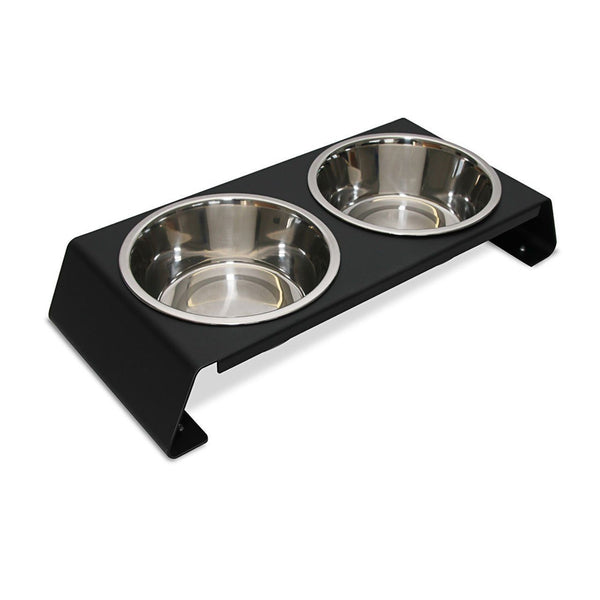Crate training has become an increasingly popular method for dog owners seeking to create a safe and secure space for their furry companions. By providing a designated area that mimics a den-like environment, crate training offers numerous benefits, including safety, housetraining assistance, anxiety management, and convenient travel arrangements. However, it is important to approach crate training with the right knowledge and understanding, as it can be a lengthy process that requires patience and consistency.
In this comprehensive blog post, we will explore the pros and cons of crate training for dogs, shedding light on the benefits it brings to both dogs and their owners. We will delve into the various reasons why people choose to crate train their dogs, emphasizing the advantages it offers in terms of safety, housebreaking, separation anxiety management, and travel convenience. We will also discuss the potential challenges and cons associated with crate training, highlighting the importance of finding the right balance and using the crate as a positive tool rather than a source of confinement or punishment.
Whether you are considering crate training for your new puppy, aiming to enhance your dog's behavior and house manners, or seeking guidance on selecting the right crate, this blog post will serve as a valuable resource. By understanding the pros and cons of crate training and discovering the importance of a suitable crate, you will be equipped with the knowledge and tools necessary to provide your furry friend with a safe and enjoyable crate training experience.

Pros of Crate Training for Dogs
- Safety and Security:
Crate training provides dogs with a designated area that can serve as a safe haven, especially when they need to be left alone or during travel. The crate becomes a comfortable retreat where dogs can relax, reducing anxiety and preventing destructive behaviors resulting from separation anxiety.
- Housetraining Aid:
Crate training plays a pivotal role in housetraining puppies. Dogs have an innate instinct to keep their sleeping area clean. By utilizing a crate, owners can establish a routine for their puppies, promoting bladder control and encouraging them to hold their needs until taken outside.
- Prevention of Accidents and Damage:
Leaving an untrained dog alone in a house can lead to unwanted chewing, scratching, or soiling. Crate training can prevent such destructive behaviors, ensuring the safety of both the dog and the owner's belongings. Crates act as a management tool, limiting access to areas where the dog could cause harm.
- Travel Convenience and Safety:
Crate training familiarizes dogs with being confined, making travel less stressful for both short trips and long journeys. Whether it's a visit to the veterinarian or a family vacation, having a well-trained dog in a crate provides peace of mind and ensures their safety during transportation. When on the road or in the air, a secure dog crate ensures your pup is safe every step of the way. With a heavy-duty crate for your pup, dog owners can be confident knowing that their dog is receiving maximum protection during travel.
- Facilitates Introduction to a New Environment:
Crates can aid in acclimating dogs to new surroundings. Whether moving to a new home or introducing a new pet, a crate offers a secure space where dogs can feel comfortable while adapting to their surroundings gradually.
Cons of Crate Training for Dogs
- Time and Patience:
Crate training is not an overnight process. It requires time, consistency, and patience from the dog owner. Dogs may initially resist being confined, and it takes time for them to adjust to the crate as a positive and safe space. Rushing the training process can lead to anxiety or aversion to the crate.
- Potential for Misuse:
While crates are valuable tools, their misuse can have negative consequences. Leaving a dog in a crate for excessive periods or using it as a means of punishment can create a negative association and result in increased stress or behavioral problems. It is crucial to use the crate appropriately, ensuring that it remains a positive and inviting space.
- Limited Freedom:
Some critics argue that crate training restricts a dog's freedom. Dogs are social animals and need regular exercise and mental stimulation. Owners should strike a balance between crate time and allowing their dogs adequate opportunities for exercise, play, and socialization. However, there are benefits to restricting a dog’s freedom in certain situations. For example, if there are a lot of household hazards present, it might be a good idea to keep your pup safe in their crate so you can know they are out of harm's way.

Importance of Finding the Right Crate
A high-quality crate plays a vital role in maximizing the benefits of crate training, ensuring the dog's comfort, security, and overall well-being. Finding a suitable crate for crate training is crucial to maximize its effectiveness and the well-being of the dog. The Impact Dog Crate is one such example that offers numerous advantages:
- Durability and Security:
Impact Dog Crates are constructed from heavy-duty aluminum and contain secure slam latches providing a safe and comfortable space for the dog. The strong build ensures that the crate withstands the dog's movements and prevents escape attempts.
- Comfort and Ventilation:
These crates are designed with the dog's comfort in mind. Small ventilation holes can be found throughout the crate, which ensures your pup receives optimal airflow while preventing overheating. Additionally, Impact dog crates offer ample space for the dog to stand, lie down, and move around as needed.
3. At-home and On-the-go Use:
Impact Dog Crates are built to last a lifetime of everyday use- whether you are at home or on the go. When dog owners invest in an Impact Dog Crate, they have peace of mind knowing their dog and home are safe from harm. Plus, a safe and secure crate is the most effective way to protect your pup during travel. For pet owners looking to fly with their dogs, it's important to choose a dog crate that is IATA compliant for airline travel, such as the Impact Collapsible Dog Crate.
Crate training can be a valuable tool for dog owners, offering numerous benefits for both dogs and their human counterparts. The structured and secure environment of a crate can foster a sense of safety and comfort for the dog. Additionally, crates can be essential during travel or emergencies, ensuring the safety of our furry companions at all times. That being said, it is crucial to approach crate training with lots of patience, as improper use or excessive confinement may lead to adverse effects on the dog's mental and emotional well-being. Every dog is unique, so understanding their individual needs and preferences is paramount when beginning the crate training process. With the right approach, crate training can be a valuable tool to enhance the bond between humans and their four-legged friends.














